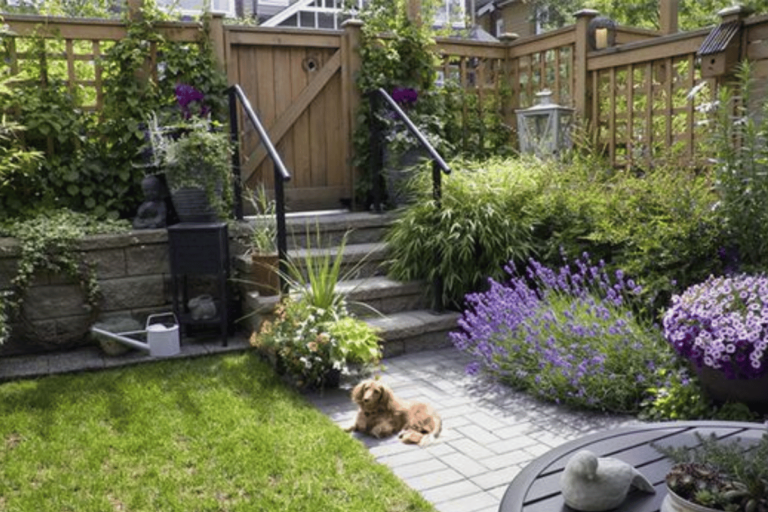How to Make Birds and Pollinators Pass Through Your Botanical Gardens
Creating a garden that appeals to birds and bees helps conserve and support local wildlife. It involves providing food, water, shelter and nesting sites. Start by planting various flowering plants that bloom yearly to ensure continuous food availability for pollinators.
Attracting Pollinators
Planting Native Flowers: Native flowers are essential because they provide nectar and pollen to indigenous bees and butterflies, attracting a variety of pollinators. To create a diverse and appealing garden, use plant species with various flower colours, shapes, and heights.
Example: Coneflowers, milkweed, and lavender are great selections for luring in bees and butterflies.
Avoiding Pesticides: Never use pesticides since they can harm beneficial insects while causing an imbalance in the natural ecosystem of your garden; instead, apply biological control methods like introducing beneficial predators, e.g. ladybugs or lacewings that feed on harmful insects.
Providing Water Sources: Bees and other pollinators need water to survive. Shallow dishes filled with pebbles offer drinking pools and resting places for these creatures. Change this water frequently so it remains fresh and appealing at all times.
Bird Attraction
Planting Native Trees/Shrubs: Birds visit more gardens if there is a variety of plants offering berries, seeds, and insects. Utilize native tree shrubs that provide berries, seeds, shelter, and nest sites.
Example: Oaks, maples, and pines are helpful trees for attracting birds, while serviceberries and elderberries are good shrubs.
Adding Bird Feeders: By pouring bird feeders consisting of seeds, suet or nectar, you can attract different types of birds. Put them into view spots and clean them regularly to prevent contamination.
Example: When mixed, Sunflower seeds, suet cakes, or hummingbird nectar can lure diverse bird species.
Providing Fresh Water: Birds need water to drink and bathe. Let there be a birdbath or shallow dish of water in your garden. Ensure that the water is changed regularly for cleanliness.
Example: A dripper or fountain feature in a birdbath can attract birds with some constant fresh water supply.
Building Natural Habitats for Local Wildlife
Creating natural habitats means emulating the structures and resources found in the wild. Begin by including vegetation layers such as groundcovers, shrubs, and trees to offer shelter and nest sites to various animals. Some parts of the garden should also be left untouched, allowing leaf litter and deadwood to collect, providing habitats for insects, amphibians and small mammals.
Creating Microhabitats: Let your garden have different microhabitats, such as sunny areas versus shady patches, wet places against dry ones, and open spaces compared to thickets, which support several species.
Example: Mix sunny flower beds with shaded fern areas; even include a miniature rock garden to facilitate diverse organisms being present.
Building Shelters: Piles of rocks are refuges for reptiles, while birdhouses/bat boxes are nesting points for birds/bats, respectively.
Example: Various heights of birdhouses will attract different types of birds, whilst bat boxes should be installed high on trees/buildings.
Creating Water Features: Consider having a small pond/wetland area that will attract frogs/dragonflies plus other aquatic wildlife. These features are necessary for beauty and other essential habitats for many life forms.
Example: Small ponds with lilies at their edges can accommodate amphibians, thereby boosting biodiversity in your yard.
Providing an Uninterrupted Supply of Food
Mixing Native Flora: To obtain nectar, pollen, seeds and berries from diverse native flowers, shrubs, and trees. They should also have varied flowering times to ensure food is available throughout the year.
For instance, some crocuses flower early in the season while others, like asters, bloom late so as not to limit pollinators’ time during the growing season.
Using Feeders and Water Stations as Supplements: Provide feeders and water stations whenever natural food sources are scarce due to extreme weather conditions or animal overconsumption.
For example, additional food can be provided through squirrel-proof bird feeders or ground-level dishes for small mammals.
In Conclusion
Designing a wildlife-friendly garden is rewarding because it supports nature and beautiful looks in your outdoor space. A range of birds, bees and other wildlife can be attracted by providing food, water, and shelter and creating natural habitats in your garden. To enjoy diverse microhabitats that enhance local species richness, use sustainable methods such as planting indigenous flora. Hence, by doing this, you will create a flourishing sanctuary for wildlife in your garden and bring joy and enlightenment within yourself and those around you.
Explore More Gardening Tips and Ideas
- Growing Bonsai: Tips for Miniature Tree Enthusiasts
- Buying Bonsai: Tips for Selecting Your Perfect Tree
- Bonsai Potting: Essential Tips for Tree Care Success
- Bonsai Maintenance: Essential Care for Tiny Trees
- Mastering the Art of Shaping Bonsai: A Beginner’s Guide
Source: Wildlife-Friendly Garden


